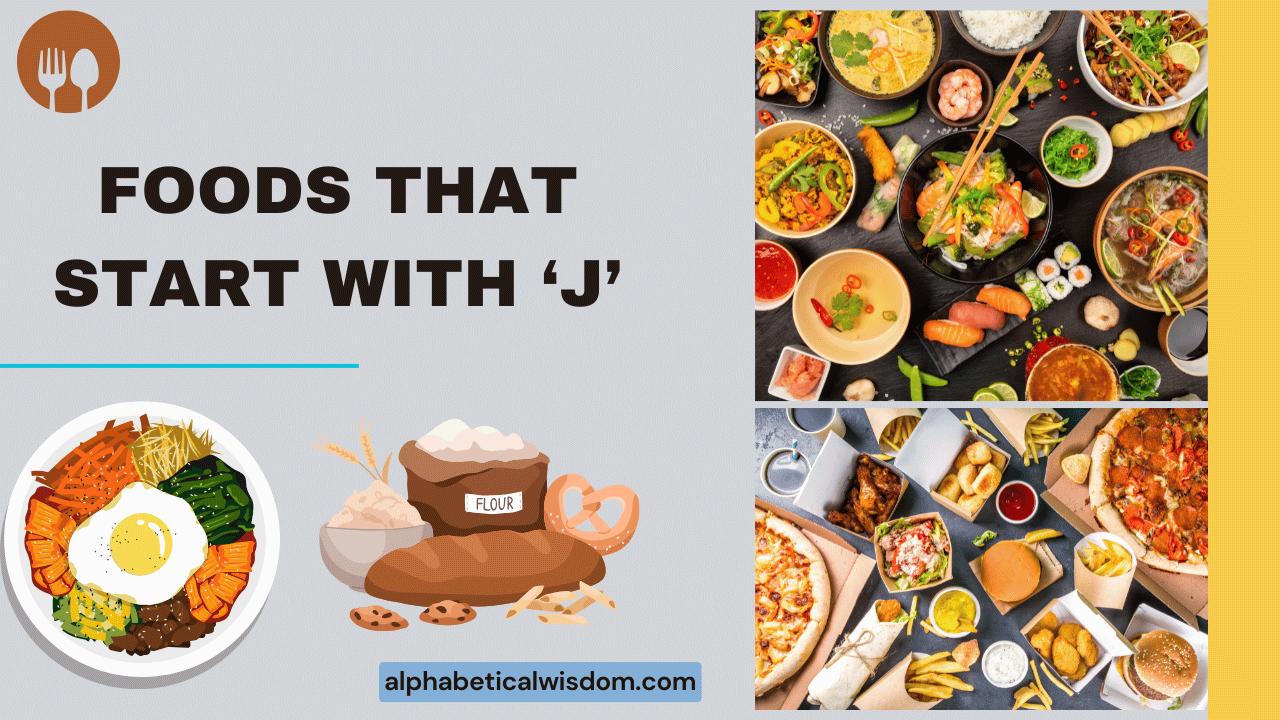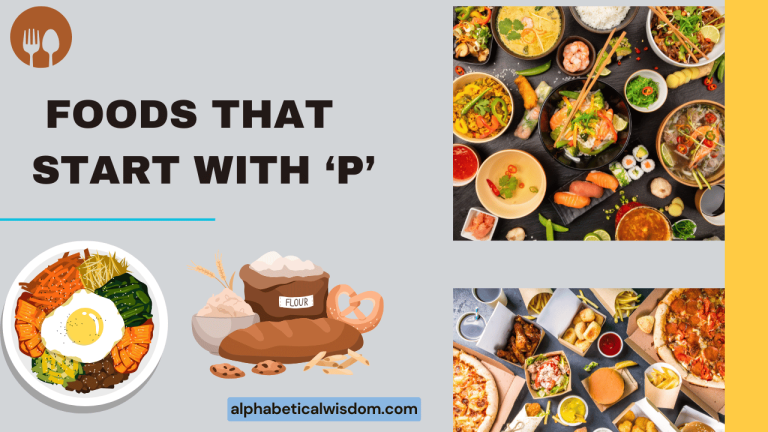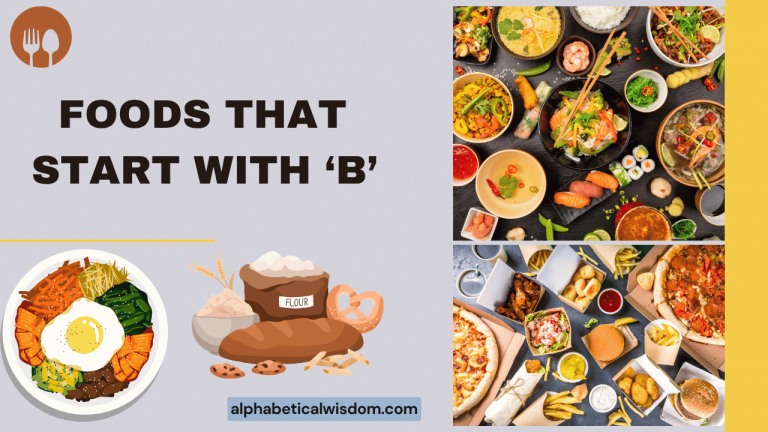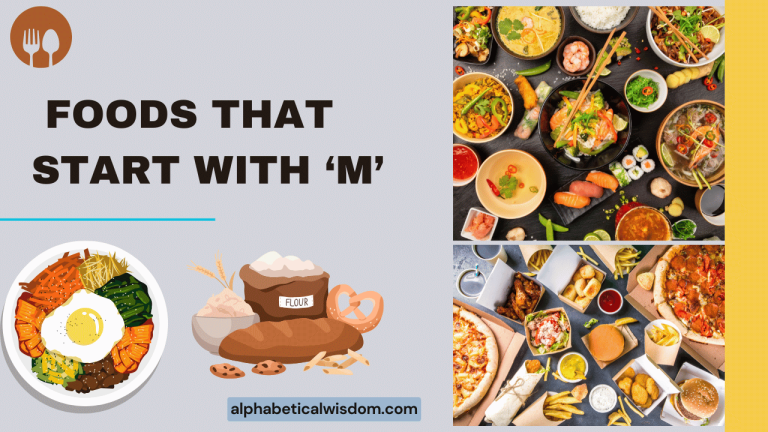Foods That Start With J: A Grammatical Gastronomy
Exploring the world of food is not just about taste; it’s also a journey through language. Focusing on foods that start with the letter “J” provides a unique opportunity to delve into English grammar, particularly nouns, articles, and countability.
Understanding how these words function within sentences enhances vocabulary and improves overall language proficiency. This article is designed for English language learners, food enthusiasts, and anyone interested in expanding their culinary and grammatical horizons.
Table of Contents
- Introduction
- Definition: Foods That Start With “J”
- Structural Breakdown: Nouns and Articles
- Types and Categories of “J” Foods
- Examples: “J” Foods in Sentences
- Usage Rules: Countable and Uncountable Nouns
- Common Mistakes: Articles and Plurals
- Practice Exercises
- Advanced Topics: Idiomatic Expressions
- FAQ: Frequently Asked Questions
- Conclusion
Introduction
The English language is rich with words, and exploring them through specific categories can be both educational and enjoyable. This article focuses on foods that start with the letter “J,” providing a unique lens through which to understand English grammar.
By examining nouns, articles, and countability in the context of these foods, learners can improve their vocabulary and grammar skills simultaneously. This exploration is useful to English language learners at all levels, food enthusiasts, and teachers looking for engaging ways to teach grammar.
Understanding how to correctly use nouns and articles with food names is crucial for clear and effective communication. Whether you’re ordering food at a restaurant, discussing recipes, or simply describing your favorite meals, knowing the grammatical rules will help you express yourself accurately.
This article provides a comprehensive guide, complete with examples, exercises, and explanations, to help you master the grammar of “J” foods.
Definition: Foods That Start With “J”
Foods that start with the letter “J” encompass a wide range of edible items, including fruits, dishes, ingredients, and desserts. In grammatical terms, these words function primarily as nouns. A noun is a word that names a person, place, thing, or idea. In the context of food, nouns refer to specific items that can be eaten or used in cooking. These nouns can be further classified as countable or uncountable, which affects how they are used with articles and plural forms.
Countable nouns are those that can be counted and have a plural form. For example, “jalapeño” is a countable noun because you can have one jalapeño, two jalapeños, and so on. Uncountable nouns, also known as mass nouns, cannot be counted and typically do not have a plural form. For instance, “jam” is generally considered uncountable because you wouldn’t say “one jam, two jams,” but rather “a jar of jam,” “some jam,” etc. Understanding this distinction is key to using these nouns correctly in sentences.
Structural Breakdown: Nouns and Articles
The structure of sentences involving food nouns often includes articles (a, an, the) and quantifiers (some, any, much, many). The choice of article depends on whether the noun is countable or uncountable, and whether it is specific or non-specific. For countable nouns, use “a” or “an” when referring to a non-specific singular item (e.g., “I ate a jackfruit”). Use “the” when referring to a specific item that has already been mentioned or is understood from context (e.g., “The jelly was delicious”).
For uncountable nouns, you generally do not use “a” or “an.” Instead, use quantifiers like “some” or “much” to indicate quantity (e.g., “I added some juice to the recipe”). When referring to a specific uncountable noun, use “the” (e.g., “The juice from the oranges was very sweet”).
The plural form of countable nouns is typically formed by adding “-s” or “-es” to the singular form (e.g., “jalapeños,” “jumbles”). However, it’s important to note that uncountable nouns do not have a plural form.
Understanding these rules is essential for constructing grammatically correct sentences. The correct use of articles and quantifiers not only demonstrates proficiency in English but also ensures clear and effective communication when discussing food.
Types and Categories of “J” Foods
Foods that start with the letter “J” can be categorized into several groups, including fruits, dishes, ingredients, desserts, and drinks. Each category has its own unique characteristics and grammatical considerations.
Fruits
Fruits are a common category of “J” foods. Examples include jackfruit, jambolan, and jujube.
These nouns are typically countable, though their usage can vary depending on context.
Dishes
Dishes refer to prepared meals or recipes. Examples include jambalaya, jollof rice, and jerky.
These nouns can be either countable or uncountable, depending on the context.
Ingredients
Ingredients are the components used to make dishes. Examples include jalapeños, juniper berries, and jicama.
These nouns are usually countable.
Desserts
Desserts are sweet dishes typically eaten at the end of a meal. Examples include jelly, jello, and jumbles.
These nouns can be countable or uncountable.
Drinks
Drinks are beverages that start with “J”. Examples might include juice (though juice can be made from many different fruits), or specific brands of drinks beginning with “J”.
Juice is generally uncountable.
Examples: “J” Foods in Sentences
Here are several examples of how “J” foods can be used in sentences, illustrating the correct use of articles, quantifiers, and plural forms. The tables below categorize these examples based on the type of “J” food.
Table 1: Examples with Fruits
This table showcases the usage of fruits starting with “J” in various sentence structures.
| Sentence | Grammatical Notes |
|---|---|
| I ate a jackfruit yesterday. | “Jackfruit” is countable; “a” is used because it’s a non-specific singular item. |
| The jackfruit I bought was very ripe. | “The” is used because it refers to a specific jackfruit. |
| Jambolan is a popular fruit in Southeast Asia. | “Jambolan” is countable; no article is needed here as it is used generally. |
| I want to buy some jujubes from the market. | “Jujubes” is plural and countable; “some” is used to indicate quantity. |
| She likes to eat jujubes as a snack. | “Jujubes” is plural and countable; used generally so no article is needed. |
| He found a ripe jackfruit on the tree. | “Jackfruit” is countable, hence the use of “a”. |
| The taste of jambolan is quite unique. | “Jambolan” used generally, referring to its taste. |
| Are there any jujubes left? | “Jujubes” is plural and countable. |
| I prefer the sweetness of jackfruit over other fruits. | “Jackfruit” is used to talk about the sweetness generally. |
| She brought a basket of jujubes to the party. | “Jujubes” is countable and is in “a basket”. |
| The vendor was selling jackfruit at a discount. | “Jackfruit” is used generally in a commercial context. |
| I’ve never tried jambolan before. | “Jambolan” is used generally, no article needed. |
| These jujubes are incredibly sweet. | “Jujubes” is plural and countable, referring to specific ones. |
| He sliced a jackfruit into several pieces. | “Jackfruit” is countable, thus “a jackfruit.” |
| The juice from the jambolan stained my fingers. | “Jambolan” is used specifically, referring to the juice source. |
| How many jujubes did you eat? | “Jujubes” is plural and countable. |
| Jackfruit is often used as a meat substitute in vegan dishes. | “Jackfruit” is used generally in a culinary context. |
| She planted a jujube tree in her garden. | “Jujube” is countable, hence the article “a”. |
| The jackfruit tree is very tall. | “Jackfruit” is used specifically, referring to a particular tree. |
| I shared some jambolan with my friends. | “Jambolan” is shared, and it is uncountable in this context. |
| The dried jujubes are a popular snack. | “Jujubes” is plural, referring to a specific type of snack. |
| A jackfruit can be quite heavy. | “Jackfruit” is countable, using “a” to indicate one. |
| The flavor of jambolan is tart and sweet. | “Jambolan” is used to describe its flavor generally. |
| He offered me a jujube. | “Jujube” is countable and offered as one item. |
| Jackfruit has a distinctive smell. | “Jackfruit” is used in general to describe its smell. |
| She added jambolan to her fruit salad. | “Jambolan” is added, and it is uncountable in this context. |
Table 2: Examples with Dishes
This table illustrates the correct usage of dishes starting with “J” in sentences.
| Sentence | Grammatical Notes |
|---|---|
| We ordered jambalaya at the restaurant. | “Jambalaya” is usually uncountable; no article is needed here. |
| I made jollof rice for dinner. | “Jollof rice” is typically uncountable; no article is needed. |
| He enjoys eating jerky as a snack. | “Jerky” is uncountable; no article needed. |
| The jambalaya I had last night was spicy. | “The” specifies a particular instance of “jambalaya”. |
| She prepared some jollof rice for the party. | “Some” is used to quantify the uncountable “jollof rice”. |
| He packed jerky for his hiking trip. | “Jerky” is uncountable, used in a general sense. |
| I want to try jambalaya when I visit New Orleans. | “Jambalaya” is referred to generally. |
| Jollof rice is a staple food in West Africa. | “Jollof rice” is uncountable and used to describe it generally. |
| Jerky is a good source of protein. | “Jerky” is uncountable and used to describe it generally. |
| The jollof rice at that restaurant is amazing. | “The” specifies a particular instance of “jollof rice”. |
| He shared his jambalaya recipe with me. | “Jambalaya” is used generally in a cooking context. |
| I prefer homemade jerky over store-bought. | “Jerky” is uncountable and used to express a preference. |
| She seasoned the jollof rice with spices. | “Jollof rice” is used specifically in a cooking context. |
| He offered me some jerky. | “Some” is used to quantify the uncountable “jerky”. |
| Jambalaya is often made with seafood. | “Jambalaya” is uncountable and used to describe its ingredients. |
| We enjoyed jollof rice at the African festival. | “Jollof rice” is enjoyed generally at an event. |
| He always carries jerky in his backpack. | “Jerky” is uncountable and carried generally. |
| The jambalaya was served hot. | “The” specifies a particular instance of “jambalaya”. |
| She learned to cook jollof rice from her grandmother. | “Jollof rice” is uncountable and learned generally. |
| He sliced the jerky into thin strips. | “Jerky” is used specifically during preparation. |
| Jambalaya originated in Louisiana. | “Jambalaya” is uncountable and used to describe its origin. |
| She added extra spices to the jollof rice. | “Jollof rice” is used specifically in a cooking context. |
| He shared jerky with his friends. | “Jerky” is uncountable and shared generally. |
| The jambalaya was the highlight of the meal. | “The” specifies a particular instance of “jambalaya”. |
| She follows a traditional recipe for jollof rice. | “Jollof rice” is uncountable and used to describe a recipe. |
Table 3: Examples with Ingredients
This table provides examples of how ingredients that start with “J” are used in sentences.
| Sentence | Grammatical Notes |
|---|---|
| I added some jalapeños to the salsa. | “Jalapeños” is plural and countable; “some” is used to indicate quantity. |
| Juniper berries are used to flavor gin. | “Juniper berries” is plural and countable; used generally. |
| She bought jicama at the farmer’s market. | “Jicama” is usually uncountable; no article is needed. |
| The jalapeños I bought were very spicy. | “The” specifies a particular instance of “jalapeños”. |
| He added juniper berries to the marinade. | “Juniper berries” is plural and added generally. |
| I enjoy eating jicama with lime. | “Jicama” is uncountable and used to describe eating habits. |
| Jalapeños add a spicy kick to any dish. | “Jalapeños” is plural and used to describe their attributes. |
| Juniper berries have a distinctive flavor. | “Juniper berries” is plural and used to describe their flavor. |
| Jicama is a healthy and refreshing snack. | “Jicama” is uncountable and used to describe its health benefits. |
| She pickled jalapeños for the winter. | “Jalapeños” is plural and used to describe a preserving action. |
| He used juniper berries to make tea. | “Juniper berries” is plural and used to describe making tea. |
| I grated jicama into the salad. | “Jicama” is uncountable and grated into a salad. |
| The jalapeños were too spicy for me. | “The” specifies a particular instance of “jalapeños”. |
| Juniper berries are often used in Scandinavian cuisine. | “Juniper berries” is plural and used to describe their culinary use. |
| Jicama is low in calories. | “Jicama” is uncountable and used to describe its nutritional content. |
| She roasted the jalapeños for a smoky flavor. | “Jalapeños” is plural and used to describe a cooking method. |
| He collected juniper berries from the forest. | “Juniper berries” is plural and used to describe collection. |
| I bought jicama at the grocery store. | “Jicama” is uncountable and bought at a store. |
| Jalapeños are a common ingredient in Mexican food. | “Jalapeños” is plural and used to describe their use in cuisine. |
| Juniper berries are dried before use. | “Juniper berries” is plural and used to describe their state. |
| Jicama is crisp and juicy. | “Jicama” is uncountable and used to describe its texture. |
| She added jalapeños to the chili. | “Jalapeños” is plural and added generally. |
| He ground the juniper berries into a powder. | “Juniper berries” is plural and used to describe grinding. |
| I peeled the jicama before cutting it. | “Jicama” is uncountable and used to describe preparation. |
Table 4: Examples with Desserts
This table provides examples of dessert starting with “J” usage in sentences.
| Sentence | Grammatical Notes |
|---|---|
| I ate some jelly after dinner. | “Jelly” is usually uncountable; “some” is used to indicate quantity. |
| She made jello for the children. | “Jello” is typically uncountable; no article needed. |
| He baked jumbles for the party. | “Jumbles” is plural and countable. |
| The jelly was very sweet. | “The” specifies a particular instance of “jelly”. |
| They enjoyed the jello at the picnic. | “Jello” is enjoyed generally. |
| She offered us jumbles with tea. | “Jumbles” is plural and offered generally. |
| I like to spread jelly on my toast. | “Jelly” is uncountable and used to describe a common practice. |
| Jello is a fun and easy dessert. | “Jello” is uncountable and used to describe its attributes. |
| Jumbles are a traditional type of cookie. | “Jumbles” is plural and used to describe their type. |
| She made a batch of jumbles for the bake sale. | “Jumbles” is countable in “a batch” |
| He flavored the jelly with fruit extracts. | “Jelly” is flavored specifically. |
| I prefer homemade jello. | “Jello” is referred to generally. |
| The jumbles were decorated with sprinkles. | “The” specifies a particular instance of “jumbles”. |
| She added jelly to the peanut butter sandwich. | “Jelly” is added, and it is uncountable in this context. |
| Jello is often served at birthday parties. | “Jello” is uncountable and served generally. |
| He ate all the jumbles in one sitting. | “Jumbles” is plural and eaten specifically. |
| The jelly had a fruity flavor. | “The” specifies a particular instance of “jelly”. |
| She set the jello in the refrigerator. | “Jello” is set specifically. |
| Jumbles are delicious with a glass of milk. | “Jumbles” is plural and used generally. |
| He bought a jar of jelly. | “Jelly” is uncountable but comes in a jar. |
Table 5: Examples with Drinks
This table provides examples of how drinks that start with “J” are used in sentences.
| Sentence | Grammatical Notes |
|---|---|
| I drank some juice this morning. | “Juice” is usually uncountable; “some” is used to indicate quantity. |
| She prefers apple juice. | “Juice” is uncountable; no article is needed here. |
| He spilled juice on the table. | “Juice” is uncountable; no article needed. |
| The juice was freshly squeezed. | “The” specifies a particular instance of “juice”. |
| They offered us orange juice. | “Juice” is offered generally. |
| I added juice to the smoothie. | “Juice” is added and uncountable. |
| I like to drink juice with breakfast. | “Juice” is uncountable and used to describe a common practice. |
| Juice is a good source of vitamins. | “Juice” is uncountable and used to describe its attributes. |
| She poured a glass of juice. | “Juice” is uncountable but comes in a glass. |
| He flavored the juice with lime. | “Juice” is flavored specifically. |
| I prefer fresh juice. | “Juice” is referred to generally. |
| The juice had a tangy flavor. | “The” specifies a particular instance of “juice”. |
| She added juice to the cocktail. | “Juice” is added and uncountable. |
| Juice is often served at brunch. | “Juice” is uncountable and served generally. |
| He finished the juice quickly. | “Juice” is finished specifically. |
| The juice was very refreshing. | “The” specifies a particular instance of “juice”. |
| She chilled the juice in the refrigerator. | “Juice” is chilled specifically. |
| I bought juice at the store. | “Juice” is bought generally. |
Usage Rules: Countable and Uncountable Nouns
The correct usage of countable and uncountable nouns is crucial for accurate communication. Here are some key rules to remember:
- Countable Nouns: Use “a” or “an” for singular non-specific items. Use “the” for specific items. Use plural forms (usually adding “-s” or “-es”) for multiple items. Examples: a jalapeño, the jackfruit, jujubes.
- Uncountable Nouns: Do not use “a” or “an.” Use quantifiers like “some,” “much,” or “a lot of” to indicate quantity. Use “the” for specific instances. Uncountable nouns do not have a plural form. Examples: some jelly, the jollof rice, much juice.
- Context Matters: Some nouns can be both countable and uncountable depending on the context. For example, “jam” is usually uncountable, but you can say “a jar of jam” to refer to a specific quantity.
It is also important to consider the intended meaning of the sentence. If you are referring to a general concept, you may not need an article at all.
For example, “Jackfruit is a popular fruit in Southeast Asia” does not require an article because it is a general statement about jackfruit.
Common Mistakes: Articles and Plurals
Many learners make common mistakes when using articles and plurals with food nouns. Here are some frequent errors and how to correct them:
Table 6: Common Mistakes
This table shows common mistakes in using articles and plurals with “J” foods, along with the correct forms.
| Incorrect | Correct | Explanation |
|---|---|---|
| I ate a jelly. | I ate some jelly. | “Jelly” is usually uncountable; use “some” instead of “a”. |
| I like a jollof rice. | I like jollof rice. | “Jollof rice” is uncountable; no article is needed. |
| I bought a juice. | I bought some juice. | “Juice” is uncountable; use “some” instead of “a”. |
| I want a jambalaya. | I want jambalaya. | “Jambalaya” is uncountable; no article is needed. |
| I added a jalapeños. | I added some jalapeños. | “Jalapeños” is plural and countable; use “some” and the plural form. |
| The jello was delicious. | The jello was delicious. | This is correct, as “the” is used for a specific instance. |
| The juice are tasty. | The juice is tasty. | “Juice” is uncountable, so use the singular verb “is”. |
| I like the jerky. | I like jerky. | “Jerky” is uncountable, and used generally, so no article is needed. |
Practice Exercises
Test your knowledge with these practice exercises. Fill in the blanks with the correct article (a, an, the) or quantifier (some, any, much, many).
Exercise 1: Articles and Quantifiers
Fill in the blanks with the correct article (a, an, the) or quantifier (some, any, much, many).
| Question | Answer |
|---|---|
| 1. I would like _______ juice, please. | some |
| 2. She ate _______ apple. | an |
| 3. He wants to try _______ jambalaya at the festival. | the |
| 4. There isn’t _______ jelly left in the jar. | much |
| 5. I bought _______ jicama at the store. | some |
| 6. _______ juice I had this morning was delicious. | The |
| 7. Do you have _______ jalapeños? | any |
| 8. She added _______ juniper berries to the recipe. | some |
| 9. We need _______ more jelly for the sandwiches. | some |
| 10. Is there _______ jollof rice left over? | any |
Exercise 2: Countable and Uncountable Nouns
Indicate whether the following nouns are countable (C) or uncountable (U).
| Noun | Answer |
|---|---|
| 1. Jalapeños | C |
| 2. Jelly | U |
| 3. Jollof rice | U |
| 4. Jackfruit | C |
| 5. Juice | U |
| 6. Juniper berries | C |
| 7. Jicama | U |
| 8. Jumbles | C |
| 9. Jambolan | C |
| 10. Jerky | U |
Exercise 3: Sentence Correction
Correct the following sentences if they are grammatically incorrect.
| Question | Answer |
|---|---|
| 1. I ate a jelly. | I ate some jelly. |
| 2. She likes a jollof rice. | She likes jollof rice. |
| 3. He added a jalapeños to the dish. | He added some jalapeños to the dish. |
| 4. I want a juice. | I want some juice. |
| 5. The jackfruit are delicious. | The jackfruit is delicious. |
| 6. We need a jicama for the salad. | We need some jicama for the salad. |
| 7. She bought a juniper berries. | She bought some juniper berries. |
| 8. I prefer the jerky. | I prefer jerky. |
| 9. I’d like a jambalaya. | I’d like jambalaya. |
| 10. He found some jujube on the tree. | He found some jujubes on the tree. |
Advanced Topics: Idiomatic Expressions
English includes several idiomatic expressions that use food-related terms. While there may not be many common idioms specifically using foods that start with “J,” understanding how food is generally used in idioms can enrich your language skills.
Here are a few examples:
- “That’s the way the cookie crumbles”: This idiom means that’s just how things are, and there’s nothing you can do about it.
- “Piece of cake”: This means something is very easy.
- “Take something with a grain of salt”: This means not to take something too seriously or literally.
While these idioms don’t directly use “J” foods, they illustrate how food-related terms can be used figuratively in English. Pay attention to how native speakers use food terms in everyday conversation to expand your understanding of idiomatic expressions.
FAQ: Frequently Asked Questions
Are all food names that start with “J” countable?
No, not all food names that start with “J” are countable. Some, like “jelly” and “jollof rice,” are typically uncountable, while others, like “jalapeños” and “jackfruits,” are countable.
When should I use “a” or “an” with food names?
Use “a” or “an” with singular, countable nouns when you are referring to a non-specific item. For example, “I ate a jackfruit.”
Can a food name be both countable and uncountable?
Yes, depending on the context. For example, you can say “I ate jelly” (uncountable) or “I bought a jar of jelly” (countable, referring to the jar).
How do I make a food name plural?
For most countable nouns, add “-s” or “-es” to the singular form. For example, “jalapeño” becomes “jalapeños.” Uncountable nouns do not have a plural form.
Why is it important to use articles correctly with food names?
Using articles correctly ensures clear and accurate communication. It helps listeners or readers understand whether you are referring to a specific item or a general concept.
Conclusion
Exploring foods that start with the letter “J” provides a valuable opportunity to enhance your understanding of English grammar. By focusing on nouns, articles, and countability, you can improve your vocabulary and communication skills.
Remember to pay attention to context and practice using these words in various sentences to master their usage. Whether you are a language learner, a food enthusiast, or an educator, the grammatical gastronomy of “J” foods offers a delicious way to learn and appreciate the English language.






